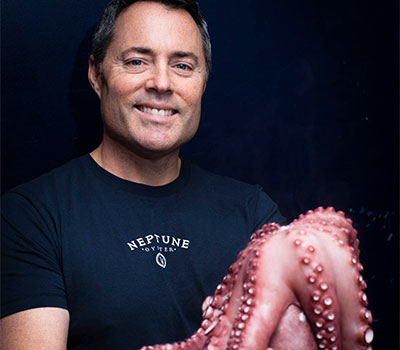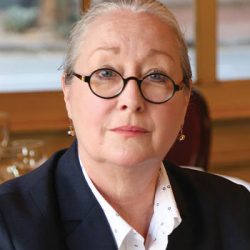Jeff Nace opened Neptune in 2004, offering mainly coastal wines to match the oceanic fare in his small, charming little spot in Boston’s North End. Pandemic-era outdoor dining—now facing an uncertain future—allowed his team to move seating into the narrow street outside the restaurant and had servers popping corks or Stelvins on tons of rosé, Txakoli and seaside whites. —Corey Warren


Compared to many of the other restaurants we poll, you guys move a huge amount of rosé, at 25% of wine sales by your estimation. Why does rosé do so well for you?
I think a big reason is the city gave us outdoor dining. It literally doubles our capacity, so with that situation, you’re doing much higher volume from May first until November first, which is rosé season. I’m sure that’s part of it. We’re also seeing more and more people ordering it year-round as opposed to seasonally. Ten years ago, that was kind of unheard of. We’re also seeing an uptick in orange.
What styles are these year-round rosé drinkers ordering?
It seems like it’s more of the higher-ticket wines. We really buy into our Domaine du Bagnol rosé. If we’re lucky we can get it to last until November-December. It’s selling for $20 a glass. People know it and love it. Our entry-tier rosé is from Corsica at $13 a glass, but it’s not moving nearly as much as the Bagnol. People know the wine and are looking for a Provence rosé to extend their summer for as long as they can, so-to-speak.
Does Muscadet sell itself chez Neptune?
I think the Boston audience is pretty intellectual and they know about Muscadet. It speaks for itself and it’s been around. That’s a classic pairing with oysters. I think a lot of people like to begin that way, a glass of Muscadet with their oysters. And they might switch over to rosé later with lobster.
We like to educate people on new varieties and new areas that we are able to bring in that might not have been around five years ago. Five years ago, that was assyrtiko from Santorini. Now, we’re doing really well with the Txakolis from the Basque country, or carricante from Mount Etna.
Speaking of Greece, you noted that guests are asking for Santorini more. Santorini’s getting pummeled by inflation, over-tourism and other factors. Is that registering for guests, or are they excited to drink it at any price and any cost?
Well, you know, it’s a great wine. Surprisingly, I mean, I started buying it 20 years ago when it was eight dollars a bottle. Now, cost is around thirty. We poured it by the glass so our regulars enjoyed it every year. It’s been going up and up. We sell it for $21 a glass, which is still high, but not for what we pay for it. It’s got such a strong following. The awareness that you brought up is starting to come about, too. That hasn’t affected sales yet. We’ll see how it works out down the road. They’re probably going have to cap a limit to take care of the environment there and the price will continue to skyrocket. Maybe it’ll catch up to Burgundy.
So much of the wine business is tied to being able to visit a place and see where the wine grows. But at some point, we may have to tell people to stop going to Santorini or the water will run out.
Yeah, you can’t gain any more land. What I’ve been telling people is just don’t go during the summer. Go late fall or early spring. Even in the winter. You get more local flavor and less harm to the environment.
Is anyone asking for assyrtiko from other parts of Greece yet? Or other Greek whites?
The Mylonas assyrtiko, from Attiki, does very well. Stylistically, it’s a little different. It’s probably not as well-rounded as Santorini—doesn’t have as much of that volcanic minerality and salinity. The Mylonas is a great representation of the grape. Some people have fallen in love with the variety, but they can’t follow through with their wallet. Sometimes, I might take them to the Sarris Robola of Kefalonia, instead.
Corey Warren is the Tastings Editor in addition to covering the wines of the Loire, Southern France, Argentina and South Africa.
This is a W&S web exclusive. Get access to all of our feature stories by signing up today.


















